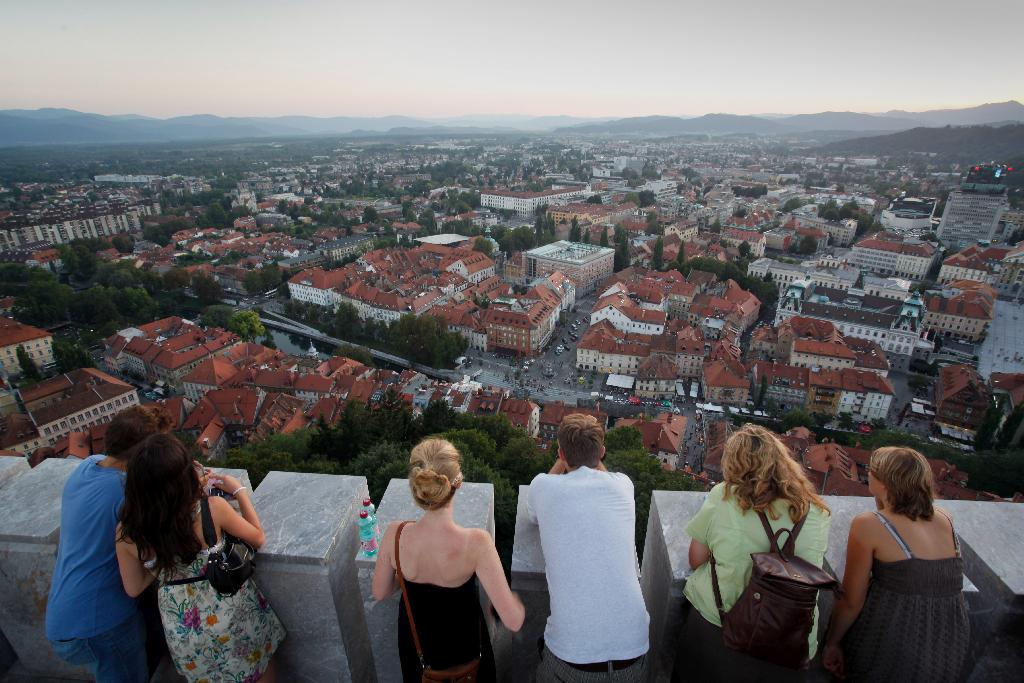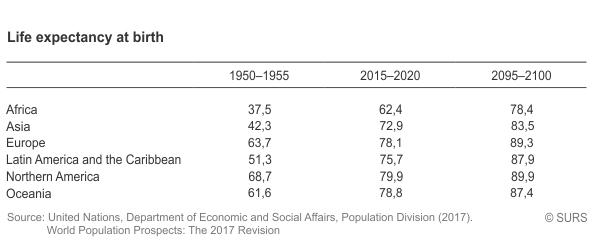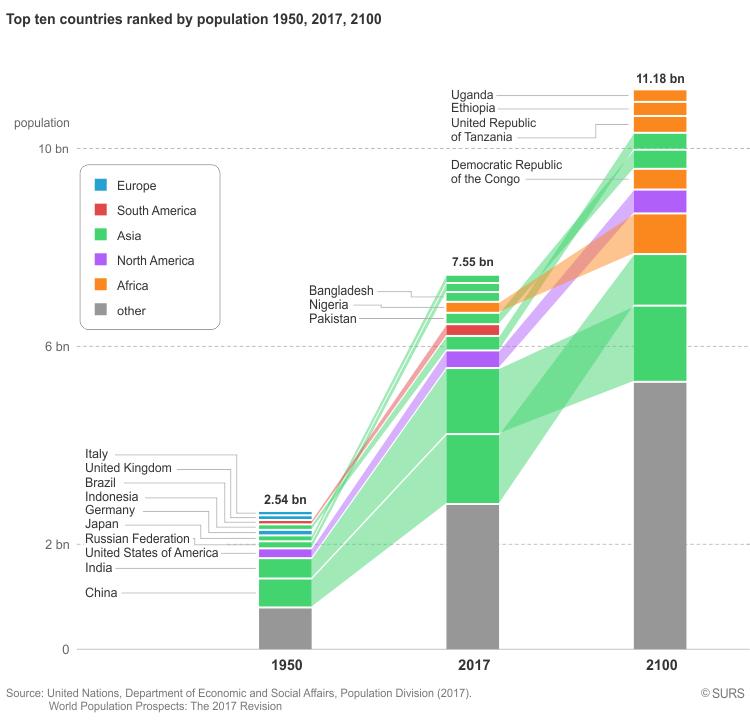



According to the United Nations data, in 2017 the global population reached 7.55 billion. On average, the population increases by 1.2% per year, but this percentage has been decreasing from year to year. More developed regions (Europe, North America, Australia, New Zealand and Japan) have a population of 1.26 billion (or 17%) and less developed regions 6.29 billion (or 83%).
Most of the increase in the world's population was contributed by less developed countries
In 1950, a third of the population lived in more developed regions and two thirds in less developed regions. By 2017, the number of people tripled, but population growth was geographically uneven:
- The population increased the most, by more than five times, in Africa
- The population of Latin America and the Caribbean grew by 3.7 times
- The population of Asia and Oceania increased by 3.1 times
- The population of North America went up by 2.1 times
- The population of Europe increased the least, by 1.3 times, the population of Slovenia by 1.4 time
According to the UN projections middle scenario, by the end of this century the share of people living in less developed regions is expected to increase to 89% or 9.9 billion. The population in more developed regions is expected to only slightly change, from 1.26 billion to 1.28 billion. The largest increase in the population is expected in Africa (by 3.7 times), followed by Oceania (by 1.8 times), North America (by 1.4 times) and Asia, and Latin America and the Caribbean (both by 1.1 times). Europe's population is projected to decline by 12%.
The population of the world, especially its more developed regions, is getting older
The world’s population has been growing more rapidly due to the decline in mortality. Lower mortality is particularly reflected in the growing availability of healthcare and improved hygiene conditions. People live longer. Global life expectancy at birth in 2017 was 72 years; for women 74 years, and for men 70 years (this means that a boy born in 2017 can expect to live 70 years). This indicator is expected to increase globally to 82.6 years by the end of the century (84.6 for women, 80.7 for men).
An important element of population aging is also a decline in fertility and consequently a reduction of the number of children. In 1950, more than half of the world's population was under the age of 25 (young people), and people over 65 years of age (elderly) accounted for 5%. Demographic trends in the developed regions show intensive population ageing and, consequently, a decrease in the number of young people. In 2015, 42% of the population were young, and the elderly accounted for 8%. Since 1950 the share of young people in the less developed regions has fallen by a fifth, while in more developed regions it has fallen by twice as much. The share of the elderly increased by twice as much (to 18%) in more developed regions, while in less developed regions it remained almost unchanged.
What is projected to happen to the population of Slovenia in the next 65 years?
The population of Slovenia is expected to increase until around 2025 (to around 2,083,000), and then it is expected to slowly decrease. On 1 January 2080, Slovenia is expected to have a population of 1,938,000, which is 6% less than in the projections' base year 2015.
In the future the total fertility rate – the average number of live-born children per woman in childbearing age (15-49 years) in a given calendar year – is projected to mostly gradually increase and reach 1.85 in 2080. Life expectancy at birth is expected to increase as well, so boys born in Slovenia in 2080 could expect to live 87 years, and girls more than 91 years.


































































